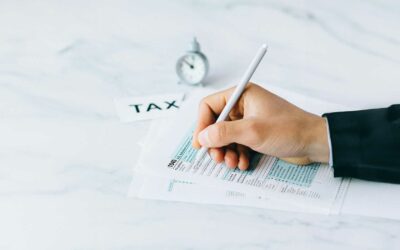Start your tax year off right

Each tax year runs from 6th April one year to 5th April the following year. Which means that the 2019/20 tax year has already started.
We look at how to get your tax year off to a good start – and ensure that you don’t pay too much tax.
How tax works
Most of us pay tax through deductions made from our income before we receive it. This is called deduction at source and works through the PAYE system. This means employers deduct income tax, and class 1 national insurance contributions from the payments and send these sums to HM Revenue and Customs (HMRC).
You have to pay tax direct to HMRC through Self-Assessment if you receive income from other sources. This includes profits from self-employment or rental income from property – and many other sources.
If you have to pay tax through Self-Assessment you must fill in an annual tax return. HMRC will calculate your tax bill based on it.
The three things you need to do
HMRC is very good at what it does. But despite the impression it likes to give, it is not all knowing. So, there are three things that you need to do to make sure it can deduct the right level of tax.
1. Make sure you have the right tax code
Every PAYE employee has a tax code. This shows the allowances and deductions used to calculate your tax bill – and they can be wrong. If you had private medical insurance or a company car with a previous job HMRC tends to assume that you still do. If things have changed the taxman will not know about it – meaning that you will be paying pay tax on benefits that you no longer have.
Since 2010, over 30 million mistakes in tax codes have been uncovered by HMRC.
The best place to find your tax code is your payslip. You can work out what your code should be here. If it is wrong, a phone call might be all you need to put it right.
If you have overpaid, the money will come back to you in a tax refund – and if you have underpaid you probably won’t have to pay it back all in one go.
2. Make full use of your allowances
The tax-free personal allowance has risen from £11,850, to £12,500. That’s an extra £650 of tax-free income compared with last year. Things get better for people who make more than £46,350, with the limit for the higher 40% rate of tax rising too. From April 6th you won’t pay higher-rate tax until you earn £50,000.
On the subject of allowances, remember that you have a new ISA allowance of £20,000 for the year. The allowance for junior ISAs is rising – meaning parents can now save up to £4,368 a year on behalf of their children, which is £108 more than last year.
You might also look at your pension allowance. Each year most people have a pension allowance of £40,000 or their total earnings, whichever is lower, and even non-earners have an allowance of £3,600.
3. Get expert help
Tax is a complicated subject. It can take a major bite out of your income and paying too much is all too common. However, the good news is that there may be many ways to reduce your tax liabilities. To find out what might help you keep more of your money, and get your 2019/20 tax year off to a really good start it pays to talk to the Continuum experts.
The information contained in this article is based on the opinion of Continuum’s understanding of the tax rates applying 2019/20 tax year.
Levels and basis of reliefs from taxation are subject to change and depend upon your personal circumstances.
Book a free initial consultation
Book an initial consultation with one of our independent financial advisers or call us on 0345 643 0770 if you would like to discuss further.



